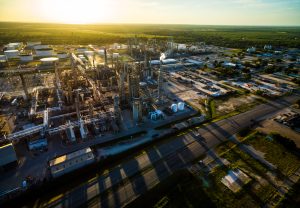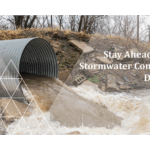
Phase 2 environmental site assessments play a critical role in understanding the environmental conditions of a site or property. These assessments are conducted to determine the presence and extent of environmental contamination, ensuring the protection of public health and the environment. In this article, we will explore the importance of Phase 2 assessments, the process involved, the regulatory framework, challenges faced, and the future of these assessments.
Understanding the Importance of Phase 2 Environmental Site Assessments
Phase 2 environmental site assessments are essential for several reasons. Firstly, they provide a comprehensive understanding of the environmental risks associated with a particular site. This knowledge allows stakeholders, such as developers, property owners, and regulators, to make informed decisions regarding land use and redevelopment.
Additionally, Phase 2 assessments evaluate the effectiveness of any remedial actions taken at a site contaminated by hazardous materials. This information helps determine if further remediation is required to mitigate risks to human health and the environment.
The Role of Phase 2 Assessments in Environmental Protection
Phase 2 environmental site assessments serve as a crucial tool in protecting the environment. By identifying and assessing potential sources of contamination, these assessments contribute to the development of effective strategies for pollution prevention and remediation.
Furthermore, Phase 2 assessments enable the identification of responsible parties, facilitating the enforcement of environmental laws and regulations. This accountability ensures that those responsible for environmental contamination bear the financial and legal burden of remediation.
For example, let’s consider a hypothetical scenario where a Phase 2 assessment identifies a manufacturing facility that has been releasing toxic chemicals into the surrounding soil and groundwater for years. This assessment would not only reveal the extent of the contamination but also help pinpoint the responsible party. With this information, regulatory agencies can take appropriate action to hold the responsible party accountable and ensure the necessary steps are taken to clean up the site.
Moreover, Phase 2 assessments play a vital role in preventing future environmental contamination. By understanding the specific sources and pathways of contamination, stakeholders can implement measures to prevent further pollution. This could involve implementing engineering controls, such as barriers or containment systems, or adopting best practices to minimize the release of hazardous substances.
Key Components of a Phase 2 Environmental Site Assessment
A Phase 2 environmental site assessment typically involves various components. These include:
- Reviewing historical records and conducting interviews to gather information about past activities on the site.
- Performing a visual inspection of the site and surrounding areas to identify potential contaminant sources and pathways.
- Collecting soil, groundwater, and air samples for laboratory analysis.
- Interpreting the data obtained from laboratory analysis to determine the presence and extent of contamination.
By integrating these components, Phase 2 assessments provide a comprehensive understanding of the environmental conditions of a site.
Furthermore, it is worth mentioning that Phase 2 assessments often involve the use of advanced technologies to enhance the accuracy and efficiency of data collection. For instance, remote sensing techniques, such as aerial imagery and satellite mapping, can provide valuable insights into the spatial distribution of potential contamination sources. This information can then be used to optimize the sampling strategy and focus efforts on areas of highest concern.
In conclusion, Phase 2 environmental site assessments are crucial for understanding and managing the environmental risks associated with contaminated sites. By providing a comprehensive understanding of the contamination, these assessments contribute to environmental protection, accountability, and the development of effective remediation strategies.
The Process of Conducting a Phase 2 Environmental Site Assessment
The process of conducting a Phase 2 environmental site assessment involves several key steps:
Initial Site Inspection and Sampling
During the initial site inspection, environmental consultants visually assess the site to identify potential sources of contamination. This may include storage tanks, chemical spills, or abandoned industrial equipment. Samples, such as soil and groundwater, are collected from relevant locations for laboratory analysis.
Furthermore, during the initial site inspection, historical records and aerial photographs of the site are often reviewed to gain a better understanding of past land use practices. This information can help in pinpointing areas that are more likely to be contaminated and guide the sampling plan.
Laboratory Analysis and Data Interpretation
The samples collected during the site inspection undergo thorough laboratory analysis. The results of the analysis provide valuable information about the presence and concentration of contaminants. These findings are then interpreted to assess the potential risks posed by the contamination.
Moreover, the laboratory analysis may include tests for a wide range of contaminants, such as heavy metals, volatile organic compounds, and petroleum hydrocarbons. The data generated from these tests are crucial in determining the extent of contamination and developing a remediation plan tailored to the specific site conditions.
Regulatory Framework for Phase 2 Environmental Site Assessments
The regulatory framework for Phase 2 environmental site assessments includes various federal and state laws and regulations. These regulations establish the standards and protocols for conducting assessments, ensuring environmental protection and compliance.
Federal and State Environmental Laws and Regulations
At the federal level, laws such as the Comprehensive Environmental Response, Compensation, and Liability Act (CERCLA) and the Resource Conservation and Recovery Act (RCRA) guide the assessment process. State-level regulations often supplement these federal laws, establishing additional requirements specific to each state.
Compliance and Enforcement of Environmental Standards
Government agencies, such as the Environmental Protection Agency (EPA) and state environmental departments, oversee compliance with environmental standards. These agencies conduct inspections, review assessment reports, and enforce penalties for non-compliance.
Challenges and Solutions in Phase 2 Environmental Site Assessments
Despite their importance, Phase 2 environmental site assessments can encounter various challenges. It is crucial to address these challenges effectively to ensure accurate and reliable assessment results.
Common Obstacles in Conducting Assessments
One common challenge is accessing the site due to physical barriers or legal constraints. Limited information availability about historical site activities can also pose difficulties. Additionally, the complexity and cost of laboratory analyses can hinder the assessment process.
Innovative Approaches to Overcome Challenges
To overcome these challenges, environmental consultants have adopted innovative approaches. Drones and remote sensing technologies, for example, help assess sites that are challenging to access physically. Advanced data analytics also streamline the interpretation of large datasets, improving the accuracy and efficiency of assessments.
The Future of Phase 2 Environmental Site Assessments
Looking ahead, Phase 2 environmental site assessments are expected to evolve further to meet emerging needs and challenges.
Emerging Technologies and Techniques
Advancements in technology, such as the use of artificial intelligence and machine learning, are revolutionizing environmental assessment practices. These technologies enable faster data interpretation, identification of previously undetectable contaminants, and more accurate risk assessments.
The Impact of Climate Change on Environmental Assessments
The increasing threats posed by climate change necessitate the integration of climate adaptation and resilience strategies into environmental assessments. Assessments must consider potential changes in environmental conditions, such as increased flood risk or changing precipitation patterns, to ensure the long-term protection of human health and the environment.
In conclusion, Phase 2 environmental site assessments are vital for understanding the risks posed by environmental contamination. They provide valuable information needed to protect public health, the environment, and guide responsible land use and development. By staying abreast of regulatory requirements, effectively addressing challenges, and embracing emerging technologies, Phase 2 assessments will continue to play a crucial role in ensuring a sustainable future.
Understanding the risks and complexities of environmental contamination is essential for any business looking to ensure compliance and protect public health. ESE Partners, with our extensive experience and commitment to environmental problem solving, stands ready to guide you through the intricacies of Phase 2 Environmental Site Assessments. Our team of experts is equipped to provide tailored solutions that meet your unique needs, whether it’s assessment, remediation, or compliance services. With offices in Houston, Dallas-Fort Worth, League City, Austin, and San Antonio, we are strategically positioned to respond swiftly and deliver quality-driven results. Don’t let environmental challenges hinder your progress. Request A Proposal today and partner with ESE Partners to move your business forward responsibly.








